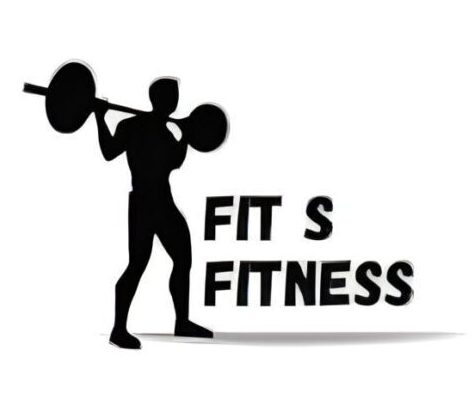Introduction:
- Physical health: Regular exercise and fitness training improve cardiovascular health, strengthen muscles and bones, enhance flexibility and mobility, and support healthy body weight management. Engaging in physical activity reduces the risk of chronic diseases such as heart disease, diabetes, obesity, and certain types of cancer.
- Mental health and mood enhancement: Exercise has a positive impact on mental health by reducing symptoms of anxiety, depression, and stress. Physical activity stimulates the release of endorphins, often referred to as “feel-good” hormones, which can improve mood and overall mental well-being. Fitness training can also boost self-esteem and body confidence.
- Cognitive function and brain health: Physical activity has been linked to improved cognitive function, including enhanced memory, attention, and problem-solving abilities. Regular exercise promotes neuroplasticity, which is the brain’s ability to adapt and form new connections. It can also reduce the risk of cognitive decline and improve overall brain health.
- Energy and stamina: Fitness training improves endurance and stamina, allowing you to perform daily activities more efficiently and with less fatigue. Regular exercise increases oxygen and nutrient supply to the body’s tissues, boosting energy levels and reducing feelings of fatigue.
- Weight management: Fitness training, combined with a healthy diet, is an effective approach to achieving and maintaining a healthy body weight. Engaging in regular physical activity helps burn calories, increases lean muscle mass, and builds metabolism. It can also help prevent weight gain and assist in weight loss efforts.
- Disease prevention and management: Regular exercise plays a significant role in preventing and managing various chronic conditions, including cardiovascular diseases, type 2 diabetes, certain types of cancer, and osteoporosis. Physical activity improves blood circulation, lowers blood pressure, regulates blood sugar levels, and strengthens the immune system.
- Social connections and community: Participating in fitness training can provide opportunities to connect with others who share similar interests. Whether it’s joining group fitness classes, sports teams, or fitness communities, exercising with others can enhance social interactions, provide support, and promote a sense of belonging.
- Longevity and quality of life: Engaging in regular fitness training has been associated with increased longevity and improved quality of life. By maintaining physical fitness, individuals can maintain their independence, perform daily activities with ease, and enjoy an active and fulfilling lifestyle as they age.
It’s important to note that fitness training should be tailored to individual needs, abilities, and health conditions. It’s advisable to consult with healthcare professionals, such as doctors or certified fitness professionals, to develop a safe and effective fitness training program that suits your specific goals and circumstances.

FITNESS TRAINING:
Fitness training is the process of engaging in physical exercise and activities to improve one’s overall health, strength, endurance, flexibility, and cardiovascular fitness. It is an essential component of a healthy lifestyle and can be pursued for various goals, such as weight loss, muscle gain, improved athletic performance, or general well-being.
When designing a fitness training program, it’s important to consider your current fitness level, goals, and any specific limitations or medical conditions you may have. Here are some key components to include in a well-rounded fitness training regimen:
- Cardiovascular Exercise: This type of exercise raises your heart rate and helps improve cardiovascular health. It can include activities like running, cycling, swimming, brisk walking, or using cardio machines at the gym.
- Strength Training: This can involve using weights, resistance bands, or bodyweight exercises like push-ups, squats, and lunges. Aim for two or more days of strength training per week, targeting major muscle groups.
- Flexibility and Stretching: Stretching exercises improve flexibility, joint range of motion, and help prevent injuries. Include dynamic stretches (moving stretches) before a workout and static stretches (holding a stretch) after your workout or as a separate session. Yoga and Pilates can also be beneficial for flexibility.
- Balance and Stability: Training for balance and stability helps improve coordination and posture, and reduces the risk of falls. Exercises like standing on one leg, using balance boards, or practicing yoga poses can enhance these skills.
- Rest and Recovery: Allow your body sufficient time to rest and recover between workouts. This allows muscles to repair and grow stronger. Get enough sleep, maintain a balanced diet, and listen to your body to avoid overtraining and injuries.
- Progressive Overload: Gradually increase the intensity, duration, or frequency of your workouts to challenge your body and continue making progress. This principle of progressive overload helps prevent plateaus and ensures ongoing improvement.
Benefits of fitness:
Fitness offers numerous benefits for both physical and mental well-being. Here are some key benefits of engaging in regular fitness activities:
- Improved physical health: Regular exercise and physical activity can help improve cardiovascular health, increase stamina, strengthen muscles and bones, and enhance overall physical fitness. It can also reduce the risk of chronic diseases such as heart disease, diabetes, obesity, and certain types of cancer.
- Weight management: Engaging in physical activities, such as aerobic exercises, resistance training, and sports, can help with weight management by burning calories, increasing metabolism, and promoting the development of lean muscle mass.
- Enhanced mental well-being: Physical activity can improve mood, boost self-esteem, and contribute to better mental health and overall emotional well-being.
- Increased energy levels: It improves circulation, oxygen flow, and the efficiency of various bodily systems, which can result in increased energy and productivity throughout the day.
- Better sleep quality: Engaging in regular exercise can promote better sleep patterns and improve the quality of sleep. It helps regulate the sleep-wake cycle and can reduce insomnia and other sleep disorders.
- Enhanced cognitive function: Physical activity has been linked to improved cognitive function, memory, and concentration. It can enhance brain health, stimulate the growth of new brain cells, and improve overall cognitive performance.
- Disease prevention: Regular exercise and physical activity can help reduce the risk of various diseases, including cardiovascular diseases, type 2 diabetes, certain types of cancer, osteoporosis, and age-related cognitive decline.
- Increased longevity: Leading an active lifestyle and maintaining physical fitness have been associated with increased longevity. Regular exercise can improve overall health, reduce the risk of chronic diseases, and promote healthy aging.
- Social benefits: Participating in fitness activities, such as group classes, sports teams, or outdoor activities, can provide opportunities for social interaction, networking, and building new relationships. It can foster a sense of community and support, enhancing overall well-being.
- Improved quality of life: Fitness contributes to an overall improved quality of life by promoting physical health, mental well-being, increased energy, better sleep, and a positive outlook. It enhances one’s ability to perform daily tasks, reduces the risk of injury, and allows for greater participation in recreational and leisure activities.
Importance of fitness:
Fitness is incredibly important for overall health and well-being. Engaging in regular physical activity and maintaining a good level of fitness has numerous benefits for both the body and mind. Here are some key reasons why fitness is important:
- Physical Health: Regular exercise and fitness activities help maintain a healthy body weight, strengthen muscles and bones, improve cardiovascular health, and enhance overall physical endurance. It reduces the risk of chronic diseases such as obesity, diabetes, heart disease, and certain types of cancer.
- Mental Health: Fitness plays a crucial role in promoting mental well-being. Exercise releases endorphins, which are known as “feel-good” hormones that can boost mood and reduce symptoms of stress, anxiety, and depression. It improves cognitive function, memory, and promotes better sleep, leading to enhanced mental clarity and focus.
- Energy and Stamina: Regular fitness activities improve energy levels and increase stamina. Engaging in physical exercise enhances the efficiency of the cardiovascular system, delivering oxygen and nutrients to the body’s tissues more effectively. This results in increased energy levels, allowing individuals to perform daily tasks with ease and tackle physical challenges more effectively.
- Weight Management: Maintaining a healthy weight is crucial for overall health and fitness. Regular exercise, combined with a balanced diet, helps burn calories, build lean muscle mass, and increase metabolism, contributing to weight loss or weight maintenance. It also helps prevent weight regain after losing weight.
- Disease Prevention: Regular physical activity is linked to a reduced risk of various diseases. It helps prevent or manage conditions such as high blood pressure, type 2 diabetes, stroke, certain types of cancer, and metabolic syndrome. Fitness activities also support a healthy immune system, reducing the likelihood of infections and illness.
- Longevity and Aging: Fitness has been associated with a longer and healthier lifespan. Regular exercise can slow down the aging process, improve longevity, and enhance overall quality of life in older adults. It helps maintain mobility, flexibility, and balance, reducing the risk of falls and injuries.
- Confidence and Self-esteem: Regular exercise and physical fitness can boost self-confidence and improve self-esteem. Achieving fitness goals, building strength and endurance, and witnessing physical improvements contribute to a positive body image and enhanced self-worth.
- Social Connections: Fitness activities often provide opportunities for social interaction and connection. Engaging in group exercise classes, team sports, or fitness communities allows individuals to meet like-minded people, build friendships, and develop a sense of community.
The Different Types of Fitness Training Methods for Every Goal
- Cardiovascular training:
Cardiovascular training, also known as cardio or aerobic exercise, is a type of physical activity that focuses on increasing the efficiency and endurance of your cardiovascular system. It involves rhythmic, repetitive movements that elevate your heart rate and increase oxygen consumption, thereby improving the health of your heart, lungs, and circulatory system.
Benefits of Cardiovascular Training:
- Increased Stamina and Endurance: Regular cardio training improves your body’s ability to utilize oxygen, allowing you to engage in physical activities for longer durations without feeling tired. This increased stamina is beneficial for everyday tasks and sports performance.
- Weight Management: Cardio exercises burn calories and can aid in weight loss or weight maintenance by creating a calorie deficit. Engaging in activities like running, cycling, swimming, or brisk walking can help you shed excess body fat and maintain a healthy weight.
- Reduced Risk of Chronic Diseases: Regular cardiovascular training can lower the risk of developing various chronic conditions, including type 2 diabetes, certain types of cancer, and metabolic syndrome.
- Improved Mood and Mental Health: Cardiovascular exercise releases endorphins, often referred to as “feel-good” hormones, which can elevate your mood, reduce stress, and alleviate symptoms of anxiety and depression.

Types of Cardiovascular Training:
- Running/Jogging: Running or jogging is a popular and effective form of cardio exercise. It can be done outdoors or on a treadmill and requires minimal equipment.
- Cycling: Whether you prefer outdoor biking or indoor stationary cycling, this activity provides an excellent cardiovascular workout while being gentle on the joints.
- Swimming: Swimming is a low-impact, full-body workout that improves cardiovascular fitness, muscular strength, and flexibility.
- HIIT (High-Intensity Interval Training): HIIT involves short bursts of intense exercise followed by brief recovery periods. This type of training can be performed with various exercises such as burpees, jumping jacks, or mountain climbers, and helps improve cardiovascular fitness in a shorter amount of time.
- Aerobics and Group Classes: Joining aerobics classes, dance workouts, or group fitness classes like Zumba can be an enjoyable way to improve cardiovascular fitness while having fun with others.
- Rowing: Rowing machines provide a challenging total-body workout that engages multiple muscle groups and boosts cardiovascular endurance.
It’s important to choose cardiovascular activities that you enjoy and that suit your fitness level and physical capabilities. If you have any underlying health conditions or concerns, it’s always recommended to consult with a healthcare professional before starting a new exercise program.
- Strength Training:
Strength training is a type of physical exercise that focuses on building and improving muscular strength and endurance. It involves performing exercises with resistance, such as weights, resistance bands, or bodyweight, to challenge and overload the muscles.
- Muscle Strength: Strength training helps increase muscle strength by placing stress on the muscles, forcing them to adapt and grow stronger. This is achieved through progressive overload, gradually increasing the resistance or intensity of the exercises over time.
- Muscle Endurance: Strength training also improves muscle endurance, which refers to the ability of muscles to perform repetitive contractions over an extended period. This is particularly beneficial for activities that require prolonged muscular effort, such as running, cycling, or even everyday tasks.
- Body Composition: Strength training plays a significant role in improving body composition. As muscles are more metabolically active than fat, having a higher muscle-to-fat ratio can boost metabolism and overall calorie expenditure, even at rest.
- Bone Health: Strength training is crucial for maintaining and improving bone health. Weight-bearing exercises, such as squats, lunges, and deadlifts, stimulate the bones and help prevent conditions like osteoporosis, especially in older adults.
- Injury Prevention: Strengthening the muscles, tendons, and ligaments through resistance training can help prevent injuries. By improving joint stability, balance, and overall muscular strength, individuals are less prone to strains, sprains, and other common injuries during physical activities.
- Functional Fitness: Strength training improves functional fitness, which refers to the ability to perform daily activities efficiently and with reduced risk of injury.
- Mental Health Benefits: Engaging in strength training can have positive effects on mental well-being. Exercise, in general, releases endorphins, which are natural mood elevators. Strength training can also boost self-confidence, improve body image, reduce anxiety and depression, and enhance overall cognitive function.
When incorporating strength training into your fitness routine, it’s important to consider factors like proper form and technique, gradual progression, adequate rest and recovery, and consulting with a qualified fitness professional if needed. They can provide guidance on creating a personalized program tailored to your goals, fitness level, and any specific considerations or limitations you may have.
- Flexibility training:
Flexibility training, also known as stretching, is an essential component of fitness that focuses on improving the range of motion and flexibility of your muscles and joints. It involves performing various stretching exercises to lengthen and stretch the muscles, tendons, and ligaments. Here are some key aspects of flexibility training:
- Range of Motion: Flexibility training helps increase the range of motion of your joints, allowing you to move more freely and efficiently. By improving flexibility, you can perform daily activities with greater ease and reduce the risk of muscle imbalances and injuries.
- Muscle Elasticity: Stretching exercises promote muscle elasticity, which refers to the ability of muscles to stretch and return to their original length. Flexible muscles are less prone to strains and tears during physical activities or sports.
- Posture and Alignment: Regular flexibility training can improve posture and alignment by correcting muscle imbalances and reducing muscle tension. It helps lengthen tight muscles and alleviate common postural issues, such as rounded shoulders or excessive curvature of the spine.
- Injury Prevention: Flexible muscles and joints are less susceptible to injuries. By maintaining an adequate range of motion, you decrease the likelihood of muscle strains, joint sprains, and other musculoskeletal injuries.
- Improved Performance: Flexibility training can enhance overall physical performance in various activities. It allows you to move more efficiently, with greater power and control. For athletes, improved flexibility can contribute to better sports performance and reduced risk of performance-related injuries.
- Muscle Recovery: Stretching exercises can aid in muscle recovery after intense workouts. They help increase blood flow to the muscles, which delivers oxygen and nutrients, and remove waste products. Stretching can also alleviate muscle soreness and stiffness, promoting faster recovery.
- Relaxation and Stress Relief: Stretching has a relaxing effect on the body and mind. It can help reduce muscle tension, relieve stress, and promote relaxation. Incorporating stretching exercises into your fitness routine can be a valuable tool for managing stress and promoting overall well-being.
When engaging in flexibility training, it’s important to remember a few key principles:
- Warm-up: Always perform a light warm-up before stretching to increase blood flow to the muscles and prepare them for stretching.
- Proper Technique: Use proper form and technique during stretching exercises to maximize effectiveness and minimize the risk of injury. Avoid bouncing or jerking movements and focus on a slow, controlled stretch.
- Balance: Work on improving flexibility in all major muscle groups and both sides of the body to maintain balance and prevent muscle imbalances.
- Gradual Progression: Gradually increase the intensity and duration of your stretches over time. Avoid pushing yourself too hard and respect your body’s limits.
- Consistency: Regularity is key when it comes to flexibility training. Aim to incorporate stretching exercises into your fitness routine at least two to three times per week.
If you’re unsure about the appropriate stretches or techniques for your specific needs, consulting with a qualified fitness professional or a certified stretching instructor can be beneficial. They can guide you through proper stretching routines and provide personalized recommendations based on your goals and limitations.




